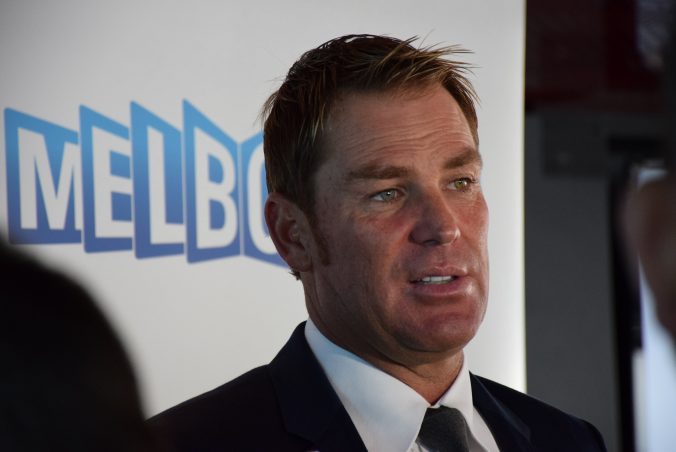Shane Warne’s charity hit the news some months back. Following revelations around poor financial management and intense media scrutiny, the charity folded in January. What lessons does this hold for donors and charities?
The story seems straightforward, yet a closer look reveals some useful lessons for donors and charities alike, and they’re not the lessons you might expect. First, we should have a quick recap on what happened:
- The Shane Warne Foundation raised money for other charities using high-profile, high-cost events such as poker tournaments and dinners.
- It was poorly financially run, losing money four out of the last five financial years, and had a series of 3 CEOs in that time. It did not make public its annual or financial reports.
- The foundation donated to charity 16 cents of every dollar raised between 2011-13, and 24 cents of every dollar it raised in 2014-15.
- Warne’s brother Jason was paid an $80,000 annual salary in a year that the foundation donated $54,600 to charity.
- Consumer Affairs Victoria (CAV) began making inquiries into the foundation’s operations in July 2015 before renewing its fundraising licence. Concerns had been raised about its expenses, level of donations to beneficiaries, and the amount of money it was holding in reserve, according to a CAV statement.
- The foundation was voluntarily shut down in January 2016. An audit ordered by consumer watchdog concluded in March that the foundation complied “in all material aspects” with the law, though the CAV has, as yet, not issued a statement on the audit result.
Of course, that’s not all there is to tell, otherwise this article would be rather boring. For the full story, you can read the SMH article as a good starting point as well as the Age and the ABC. However, as I’ll touch on later, keep your sceptical hat on as you read. This reporting is telling a story, as all media does, so it can be hard to separate out the truly relevant from the gossip and inference [act_tooltip title=’1′ content=’Of course, there is no such thing as a truly reliable narrator – I too have my own biases and the way I write about this will reflect them. But I’ll do my best to point them out as we go.’].
So, a poorly run charity that was losing money was shut down after media scrutiny uncovered the state of its finances. A fairly unremarkable story, spiced up by the involvement of a well-known celebrity. What could we possibly learn from it, other than ‘don’t be like those guys’? A fair amount, as it turns out.
Lessons learned
Transparency should be a non-negotiable when picking a charity
An obvious (and rather self-serving, for a transparency promotion organisation) point is that this story illustrates just how valuable transparency is in the charitable sector. The foundation didn’t release financial statements, a fact that was used against it in reporting. Had they released them, these problems would have come to light before they got so substantial, and potential donors would have had a far better understanding of where their money was going. We’ll never know how this would have affected the eventual outcome, but it’s hard to believe it wouldn’t have been better for both donors and the charity itself.
Big events are actually not great fundraisers
Glitzy, high-profile events are a staple of many large charity’s fundraising arsenals, but they have a guilty secret: compared to most ways of raising money they’re actually startlingly inefficient. The reason is obvious – luxurious events are not, by definition, cheap. Putting on a proper black-tie ball can be a staggeringly expensive proposition. Entertainment, venues, three-course meals, decorations, staffing, it adds up remarkably quickly [act_tooltip title=’2′ content=’Why aren’t those things donated? Simply put, a venue can’t give away hundreds of thousands of dollars of business on a regular basis and survive.’]. Not to mention high-risk – most costs need to be incurred ahead of time, with no certainty that the event will get enough donors to break even, much less make a good return for the charity.
Choice has pointed this out previously – “[Event costs] can mean less than half of your ticket price goes to the actual cause asking for money. In 2005, just eight per cent of proceeds from a fundraising dinner for the Children’s Cancer Institute of Australia for Medical Research made its way to actual cancer research, due to poor turnout.” For larger charities, this can still be a good investment – it allows them to gain a lot of promotion and get close to their more high-worth donors. But basing a foundation around doing nothing but big events makes budgeting a constant tightrope walk. With the benefit of hindsight, the Shane Warne Foundation’s fundraising model was a high risk, low reward proposition from the start.

The media are a double-edged sword
Charities and the media have an interesting relationship. When you donate to a charity you generally don’t get anything in return aside from a fuzzy feeling and perhaps a letter of thanks. This is obvious, but it means that the reputation of the charity is absolutely paramount – if you don’t have absolute trust in the charity, you’re not likely to donate to them. This is why services like ChangePath are in such demand. But it’s also a critical factor when dealing with the media, the main source of most people’s information about charity. For not-for-profits, unlike P.T. Barnum, not all publicity is good publicity. An article that’s critical of a charity can be immensely damaging to its ability to fundraise.
And yet, charities need the media. Not only because advertising is expensive and media coverage is a cheap way to get exposure, but also thanks to the legitimising aura of major media outlets. If it isn’t being featured in newspapers, on television and in other areas, a charity is cut off from a large potential donor base it couldn’t reach in other ways. Social media is changing this to an extent, but the power of the media remains strong.
The Shane Warne Foundation is a powerful example of how influential the media can be. Far more than the investigation by Consumer Affairs Victoria, it was media coverage of the problems of the charity that led to its eventual closure. This reporting has been not exceptionally kind – the media love a good story about a charity’s downfall, especially when a celebrity is involved. The combination of moral righteousness and schadenfreude is too good to ignore. Yet this leads to reporting that could be alleged to be biased (Shane Warne certainly felt so).
Mostly it is a subtle lack of context – say, reporting that KPMG found that cash couldn’t be accounted for, ignoring the vital context that this statement is true of almost all charities and is a standard boilerplate text found in many charity annual reports. Similarly, this reporting that a former personal assistant of Shane Warne’s won one of the charity auctions, while only in the 5th paragraph was it acknowledged that this didn’t break any laws and there was no allegation of wrongdoing. This kind of reporting is pervasive throughout the discussions of the foundation, and it makes it difficult for the general public to pull aside the curtain of moral outrage to the actual facts. It also serves to reinforce some unfortunate misperceptions about charity donations that I’ll talk about a bit later.
The power of celebrity
Celebrities have a minor superpower – they generate news simply by existing. Otherwise mundane events, such as going out on a date or being injured, get written up in breathless prose by reporters and are lapped up by the public.
This has led to many charities bringing on ‘celebrity ambassadors’ to help increase the media coverage of their work. Running a campaign against a major disease? Boring, nobody is going to write an article about it. Running a campaign against a major disease and someone famous is at the opening? Journalists will knock down your door. This is perhaps overly cynical, but it is difficult to argue with the ability of celebrities to capture media space. Celebrities also bring a host of other benefits, such as their connections to influential donors, name recognition, and pulling power for events.
There is another side to the relationship, however. As much as people want to see celebrities doing good, they want to see them doing evil more. That means that any potential wrongdoing will be amplified and broadcasted, which can have substantial repercussions for the associated charity. How many small charities are there out there that are doing the same (or worse?) than the Shane Warne Foundation, but the media never had any interest in reporting them?

The toxicity of charities spending money
The media coverage of this debacle reveals a lot about how the media perceives charity spending, which in turn shapes the way the general public thinks about it. While this is an extreme case, the general sense that charities shouldn’t spend money on administration (or indeed anything that isn’t ‘the mission’) pervades all the coverage of this incident. This is despite long-term and repeated calls to stop fixating on charity administration and costs.
The phrase ‘only 16c out of every dollar was donated to charity’ is used in most articles about the scandal, but is delivered completely devoid of context. Is that bad? How would we know? As we saw earlier, a similar fundraising event only raised 8 cents in the dollar. Administration ratios are a notoriously terrible way to assess whether a charity is doing a good job. While 16 cents is certainly not a great total, without a more nuanced understanding of the charity’s accounts it’s impossible to say whether this was due to waste, poor management, or simply the costs of hosting the events.
Similarly, much of the reporting focused on the fact that Shane Warne’s brother was paid $80,000 as CEO. While I don’t condone nepotism (it is possible, though highly unlikely, that he was the best man for the job), we need to get over our collective fear of paying charity CEOs a competitive salary. It’s something I’ll come back to in a future article, but the phrase ‘if you pay peanuts, you get monkeys’ applies [act_tooltip title=’3′ content=’Whether they ended up with a monkey anyway despite the pay packet is left for the reader to decide.’]. With the context that the average pay for a charity CEO in Australia is $100,000, $80K seems more reasonable. As always, context is important.
Giving and giving up
The fundamental problem with many of the issues raised with the Foundation is that we don’t have a counterfactual. There’s no crystal ball to tell us what would have happened if different decisions had been made. If the Shane Warne Foundation hadn’t existed, would more money have been donated to charity, or less? The charity gave (by its own estimates) nearly $4m directly to charity over 11 years. Even if we assume that’s a bit optimistic, it’s still a very substantial amount of money. A Canadian survey found that only 19% of donors decide in advance how much money they’re going to donate over the course of a year, meaning that the amount that most people give is dependent on circumstances. If donors hadn’t been at the Shane Warne Foundation fundraising events, it’s doubtful they would have ‘replaced’ that donation by giving money elsewhere. It seems likely [act_tooltip title=’4′ content=’Though, again, without a magical device to predict outcomes, we’ll never know.’] that the Shane Warne Foundation was a net force for good while it existed, even if an inefficient and poorly run one. Perhaps there was a way for it to survive the drubbing it received and reform into a better, more efficient organisation. Perhaps not. Regardless, in its very public sinking it has lessons we should all learn.
What do you think? Are there additional lessons to take from what happened to the Shane Warne Foundation?

Leave a Reply